These Women Are Shaking Up the Plus-Size Fashion Industry
The fashion industry finally sees what it's been missing.

Photo: Diego Uchitel
For 100 years this was the fashion industry gospel: Women of a certain size didn’t spend money on clothes. They’d never wear anything clingy. They didn’t want to show their arms, legs, or cleavage. As a result, they subsisted on shapeless garments in garish prints and cheap fabrics, shunted to the Siberia of department store basements.
How times have changed: Now plus-size women are rocking fringed skirts, underwear-as-outerwear, and body-con everything.
So how did we get here?
The role played by online retail cannot be overstated: E-commerce made it possible for niche lines like Ashley Nell Tipton and All 67 to sidestep the brick-and-mortar middleman and speak directly to a style-starved consumer. In the process, her shopping experience was wholly transformed—the virtual store allowed her to dream, experiment, and pirouette in the privacy (and better lighting) of her own home. Meanwhile, traditional retailers saw what was happening and caught a whiff of something chilling: In an economy where no one can afford to leave money on the table, they’d ignore this shopper at their peril.
But more than anything, it’s plus-size women themselves who are bringing about the revolution. The internet and social media have provided platforms and created community as never before. Women flock to the style-licious blogs powered by a fierce and vocal crop of fashion lovers. A new gospel is taking hold—one based on body positivity and inclusivity instead of shame.
“I want to show fat women that we shouldn’t be afraid of being seen,” says Gabi Gregg, creator of the blog GabiFresh. “And to reclaim the word fat. It doesn’t mean frumpy.” Gregg has modeled for Target and collaborated with companies to create swimwear and lingerie lines. Last year she launched Premme with fellow blogger Nicolette Mason; both were on Forbes’s 2017 list of top ten fashion influencers. On Premme’s first day, so many shoppers stormed the site that it crashed.
Naysayers argue that plus-size style promotes obesity, as if the poly-blend muumuu is a hair shirt a woman must wear until she drops some pounds. Putting aside the unlikelihood that ugly, ill-fitting clothes ever incentivized anyone to lose weight, the truth is that everyone deserves something beautiful to put on her body, regardless of what size it is.
Almost 20 years ago, designer Richard Metzger launched one of the first high-end plus-size collections. “When I did trunk shows,” he recalls, “customers said, ‘Finally, something besides pull-on pants!’” Today those customers are the reason the plus market is posting revenue gains while the overall industry is decidedly flat. For a who’s who, a what’s what, and where we still have to go, read on.
The Role Model
Every movement needs a standard-bearer. Danielle Brooks, at your service.
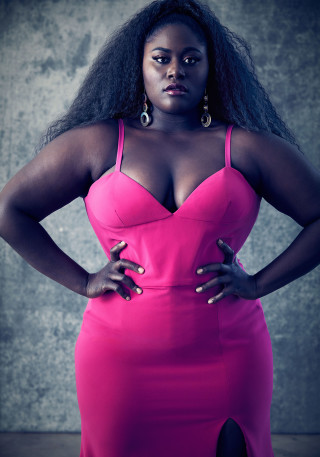
I've never been small. Ever. As a teenager, I wanted to be wearing the polo shirts and the crop tops, but they didn’t sell them in the plus-size stores. Or the clothes were too tight, and my mamma was not having that. So it was all about the accessories: I could find cool earrings and shoes and hats—but how are you supposed to figure out your style if you can’t find any clothes to wear? I’m over hearing designers give excuses. I don’t want to see girls from Orange Is the New Black, Glow, and Dietland being ignored just because we have more junk in the trunk. I want us to be trendsetters and make it easier for the next generation. So when the fashion brand Universal Standard asked me to do a collection, I created the pieces I’ve always wanted: overalls, a sweater dress, a shirtdress called the Danielle. I wish I’d seen more plus-size women expressing how much they love their bodies when I was growing up. Now I’m doing it. I’m here, and I ain’t going nowhere.
The Fit Model
If your butt looks good in those jeans, you might have Elizabeth Brown to thank.
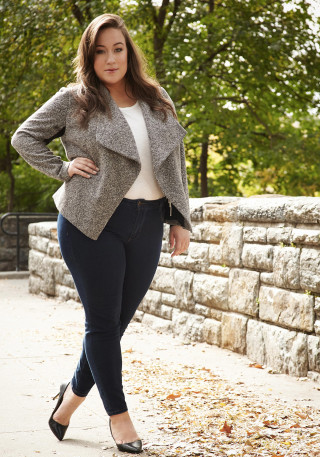
My job is to be the technical designer’s Everywoman, a live mannequin who shows how clothes will look on an actual person. I’m an 18, a common fit-model size for the plus market. I also studied apparel design, so I know patterns. Basically, I talk about my rear end all day.
I spend a lot of time imagining what it’s like to inhabit another woman’s body. If she’s had kids, her tummy might sit a little lower; will this waistband be tight? Will her pants keep slipping down? If so, she’ll hunch over, and that’s like hiding. If she doesn’t have to think about her outfit, she’s free to think about her life.
My goal is to help the brands I work for understand what plus-size women want. For so long, the options have been “refrigerator box” or “I’m up in the club, here are my boobs!” We need more simple, professional clothes. We also need to see visibly plus-size women in ads, not some size 10. I want to know what the outfit will look like on me, so I need to see a big girl, dammit!
The Disrupters
Two pals, one problem, and a game-changing solution.
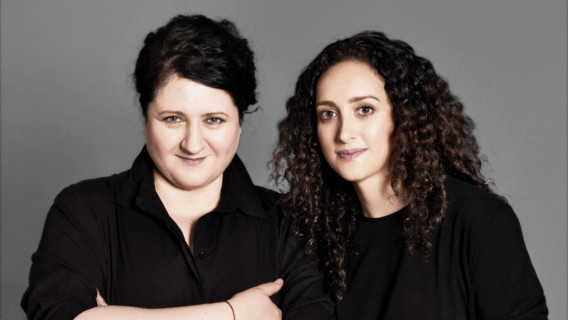
It all started with a party. New friends and fellow New Yorkers Alex Waldman and Polina Veksler were both invited, but Waldman decided not to go; as a plus-size woman, she had nothing to wear. “Alex told me there wasn’t a single store on Fifth Avenue that she could walk into and buy clothing for herself,” says Veksler. So since Waldman couldn’t find it, they used their savings to make it: quality apparel with an aesthetic of subdued colors and simple silhouettes, for a brand they called Universal Standard. “Plus women are so often infantilized, hypersexualized, or asked to dress like we’re attending a baby shower,” says Waldman. “We wanted to help women dress like their straight-size peers.” With a retail site and appointment-only showrooms in Seattle and New York City, Universal Standard has changed the game with these guiding principles.
Fit is foremost: To keep proportions consistent, the brand uses a separate fit model for every size. The site also shows customers how a garment will look on every body with a “see it in your size” feature.
It’s in the details: Scrupulous attention is paid to fabric and construction. “We developed an enzyme wash to prevent leggings from pilling between the thighs,” says Waldman. “We add elastane to jersey so it bounces back with every wear and wash, and we cut shirt hems with a curve so they fit better on the hips.”
Women should shop for the size they are: Veksler and Waldman saw that customers often buy too-small sizes in hopes of losing weight. Enter the brand’s Fit Liberty collection: If you change sizes (up or down) within a year, you can exchange your garment from this line for your new size, for free. Says Waldman: “We wanted to shut up that bully that lives in our heads.”
The Shape Shifter
Project Runway winner Ashley Nell Tipton refuses to be hemmed in.
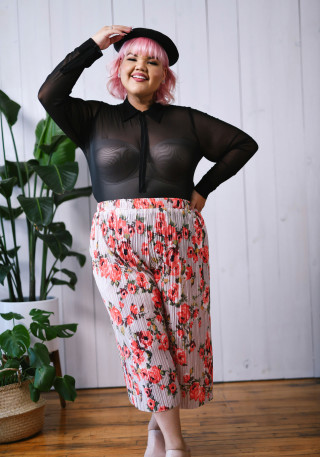
Being fat is a constant struggle between being invisible and too visible. Sometimes you want to be accepted; instead, you’re singled out and judged. In 2015, when I became the first plus-size designer to win Project Runway, I hoped it would be a moment not only for inclusive fashion, but also for all other fat human beings out there. It wasn’t just me who had won; we’d won. Many women told me they were afraid to wear bright colors or show off their arms until they saw me doing it. But some of the comments on social media were horrible: “Why did they pick that fat designer?” “How can she promote this unhealthy lifestyle?” I got depressed and gained more weight. I reached a point where I couldn’t climb stairs without losing my breath.
I finally realized that if I didn’t take care of myself, I couldn’t keep doing what I loved, so I went to therapy and started working with a trainer. I also decided to have weight-loss surgery. After that I got more judgment, this time from people in the fat community who once supported me. They turned their backs and said, “You can’t be body positive and still lose weight.” I thought, Well, why not? I wasn’t trying to be “prettier”; I wanted to have control of my life.
Size should not define us, whether we’re fat, thin, or anywhere in between. I’m focused on the plus woman, but one day I might be open to designing straight sizes. People judge me for that, too. But I just want to create clothes that make customers feel good. I want every woman to love herself and go after her dreams like I did.
The Runway
Refashioning an industry tradition for a bigger audience.
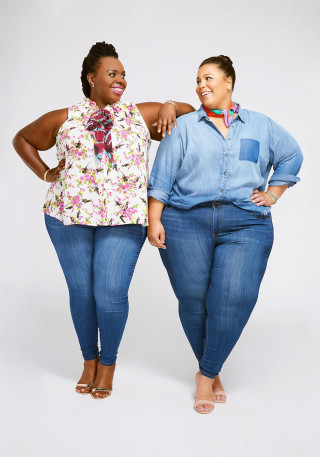
Every September, designers, models, editors, celebs, and paparazzi mass in Manhattan for the beautiful-people orgy that is New York Fashion Week. Of the more than 130 runway shows mounted last year, just two were exclusively plus-size. But elsewhere in the city, there’s an alternative mini fashion week: theCURVYcon (like Comic-Con, but less sci, more fly). This year it’s three days of workshops, discussion panels, selfies, and meet and greets. And shopping. Much-loved online brands like Eloquii and Simply Be bring racks of looks for attendees to try on IRL. TheCURVYcon is the baby of plus-size fashion bloggers CeCe Olisa and Chastity Garner, who sold clothes from their closets to help get the first gathering off the ground in 2015. Their goal: “We want to spread body positivity and inclusivity until it’s a way of life for us all.”
The Shopper
Amy Maclin on love, loss, and what she'd wear...if it zipped.
In the ’90s, as a 25-year-old new to New York, I bought a Kate Spade Sam bag. Yes, it was spendy, but who cared about debt? That nylon rectangle turned me from Tennessee hick to hip chick. I’ve teared up reading internet comments from women with similar memories. We weren’t just carrying the bag to tell everyone we were sophisticated. We were telling ourselves, too.
A shopper at heart, I mark life’s milestones by buying clothes for the person I’m hoping to become...unless my butt doesn’t fit into anything, in which case I get a purse instead. I’m on the cusp of plus-size, so I can find work clothes without much drama, but when it comes to fancy dresses or swanky suits, I’m out of luck: Most designers max out at a 10 that’s really a 6. (I hate movies where the lover/sugar daddy/stalker/murderer surprises the heroine with the hot-stuff evening gown. If anybody pulls that stunt with me, he’d better include a few pairs of medical-grade Spanx.)
Body positivity is fabulous, but here’s what I long for more than any YOU GO GURL tube top: to swan into a snooty department store, buy a fantastic suit, and say to myself, You’re a woman of substance, not This is the least offensive combo of flammable separates. I’d like to get some midlife-crisis leather pants just so they can hang in my closet and whisper, Sugar, if you took me out, wouldn’t we have a time? After all, if you’re going to be the star of your own life, you need options. Wardrobe!
How times have changed: Now plus-size women are rocking fringed skirts, underwear-as-outerwear, and body-con everything.
So how did we get here?
The role played by online retail cannot be overstated: E-commerce made it possible for niche lines like Ashley Nell Tipton and All 67 to sidestep the brick-and-mortar middleman and speak directly to a style-starved consumer. In the process, her shopping experience was wholly transformed—the virtual store allowed her to dream, experiment, and pirouette in the privacy (and better lighting) of her own home. Meanwhile, traditional retailers saw what was happening and caught a whiff of something chilling: In an economy where no one can afford to leave money on the table, they’d ignore this shopper at their peril.
But more than anything, it’s plus-size women themselves who are bringing about the revolution. The internet and social media have provided platforms and created community as never before. Women flock to the style-licious blogs powered by a fierce and vocal crop of fashion lovers. A new gospel is taking hold—one based on body positivity and inclusivity instead of shame.
“I want to show fat women that we shouldn’t be afraid of being seen,” says Gabi Gregg, creator of the blog GabiFresh. “And to reclaim the word fat. It doesn’t mean frumpy.” Gregg has modeled for Target and collaborated with companies to create swimwear and lingerie lines. Last year she launched Premme with fellow blogger Nicolette Mason; both were on Forbes’s 2017 list of top ten fashion influencers. On Premme’s first day, so many shoppers stormed the site that it crashed.
Naysayers argue that plus-size style promotes obesity, as if the poly-blend muumuu is a hair shirt a woman must wear until she drops some pounds. Putting aside the unlikelihood that ugly, ill-fitting clothes ever incentivized anyone to lose weight, the truth is that everyone deserves something beautiful to put on her body, regardless of what size it is.
Almost 20 years ago, designer Richard Metzger launched one of the first high-end plus-size collections. “When I did trunk shows,” he recalls, “customers said, ‘Finally, something besides pull-on pants!’” Today those customers are the reason the plus market is posting revenue gains while the overall industry is decidedly flat. For a who’s who, a what’s what, and where we still have to go, read on.
The Role Model
Every movement needs a standard-bearer. Danielle Brooks, at your service.

I've never been small. Ever. As a teenager, I wanted to be wearing the polo shirts and the crop tops, but they didn’t sell them in the plus-size stores. Or the clothes were too tight, and my mamma was not having that. So it was all about the accessories: I could find cool earrings and shoes and hats—but how are you supposed to figure out your style if you can’t find any clothes to wear? I’m over hearing designers give excuses. I don’t want to see girls from Orange Is the New Black, Glow, and Dietland being ignored just because we have more junk in the trunk. I want us to be trendsetters and make it easier for the next generation. So when the fashion brand Universal Standard asked me to do a collection, I created the pieces I’ve always wanted: overalls, a sweater dress, a shirtdress called the Danielle. I wish I’d seen more plus-size women expressing how much they love their bodies when I was growing up. Now I’m doing it. I’m here, and I ain’t going nowhere.
The Fit Model
If your butt looks good in those jeans, you might have Elizabeth Brown to thank.

My job is to be the technical designer’s Everywoman, a live mannequin who shows how clothes will look on an actual person. I’m an 18, a common fit-model size for the plus market. I also studied apparel design, so I know patterns. Basically, I talk about my rear end all day.
I spend a lot of time imagining what it’s like to inhabit another woman’s body. If she’s had kids, her tummy might sit a little lower; will this waistband be tight? Will her pants keep slipping down? If so, she’ll hunch over, and that’s like hiding. If she doesn’t have to think about her outfit, she’s free to think about her life.
My goal is to help the brands I work for understand what plus-size women want. For so long, the options have been “refrigerator box” or “I’m up in the club, here are my boobs!” We need more simple, professional clothes. We also need to see visibly plus-size women in ads, not some size 10. I want to know what the outfit will look like on me, so I need to see a big girl, dammit!
The Disrupters
Two pals, one problem, and a game-changing solution.

It all started with a party. New friends and fellow New Yorkers Alex Waldman and Polina Veksler were both invited, but Waldman decided not to go; as a plus-size woman, she had nothing to wear. “Alex told me there wasn’t a single store on Fifth Avenue that she could walk into and buy clothing for herself,” says Veksler. So since Waldman couldn’t find it, they used their savings to make it: quality apparel with an aesthetic of subdued colors and simple silhouettes, for a brand they called Universal Standard. “Plus women are so often infantilized, hypersexualized, or asked to dress like we’re attending a baby shower,” says Waldman. “We wanted to help women dress like their straight-size peers.” With a retail site and appointment-only showrooms in Seattle and New York City, Universal Standard has changed the game with these guiding principles.
Fit is foremost: To keep proportions consistent, the brand uses a separate fit model for every size. The site also shows customers how a garment will look on every body with a “see it in your size” feature.
It’s in the details: Scrupulous attention is paid to fabric and construction. “We developed an enzyme wash to prevent leggings from pilling between the thighs,” says Waldman. “We add elastane to jersey so it bounces back with every wear and wash, and we cut shirt hems with a curve so they fit better on the hips.”
Women should shop for the size they are: Veksler and Waldman saw that customers often buy too-small sizes in hopes of losing weight. Enter the brand’s Fit Liberty collection: If you change sizes (up or down) within a year, you can exchange your garment from this line for your new size, for free. Says Waldman: “We wanted to shut up that bully that lives in our heads.”
The Shape Shifter
Project Runway winner Ashley Nell Tipton refuses to be hemmed in.

Being fat is a constant struggle between being invisible and too visible. Sometimes you want to be accepted; instead, you’re singled out and judged. In 2015, when I became the first plus-size designer to win Project Runway, I hoped it would be a moment not only for inclusive fashion, but also for all other fat human beings out there. It wasn’t just me who had won; we’d won. Many women told me they were afraid to wear bright colors or show off their arms until they saw me doing it. But some of the comments on social media were horrible: “Why did they pick that fat designer?” “How can she promote this unhealthy lifestyle?” I got depressed and gained more weight. I reached a point where I couldn’t climb stairs without losing my breath.
I finally realized that if I didn’t take care of myself, I couldn’t keep doing what I loved, so I went to therapy and started working with a trainer. I also decided to have weight-loss surgery. After that I got more judgment, this time from people in the fat community who once supported me. They turned their backs and said, “You can’t be body positive and still lose weight.” I thought, Well, why not? I wasn’t trying to be “prettier”; I wanted to have control of my life.
Size should not define us, whether we’re fat, thin, or anywhere in between. I’m focused on the plus woman, but one day I might be open to designing straight sizes. People judge me for that, too. But I just want to create clothes that make customers feel good. I want every woman to love herself and go after her dreams like I did.
The Runway
Refashioning an industry tradition for a bigger audience.

Every September, designers, models, editors, celebs, and paparazzi mass in Manhattan for the beautiful-people orgy that is New York Fashion Week. Of the more than 130 runway shows mounted last year, just two were exclusively plus-size. But elsewhere in the city, there’s an alternative mini fashion week: theCURVYcon (like Comic-Con, but less sci, more fly). This year it’s three days of workshops, discussion panels, selfies, and meet and greets. And shopping. Much-loved online brands like Eloquii and Simply Be bring racks of looks for attendees to try on IRL. TheCURVYcon is the baby of plus-size fashion bloggers CeCe Olisa and Chastity Garner, who sold clothes from their closets to help get the first gathering off the ground in 2015. Their goal: “We want to spread body positivity and inclusivity until it’s a way of life for us all.”
The Shopper
Amy Maclin on love, loss, and what she'd wear...if it zipped.
In the ’90s, as a 25-year-old new to New York, I bought a Kate Spade Sam bag. Yes, it was spendy, but who cared about debt? That nylon rectangle turned me from Tennessee hick to hip chick. I’ve teared up reading internet comments from women with similar memories. We weren’t just carrying the bag to tell everyone we were sophisticated. We were telling ourselves, too.
A shopper at heart, I mark life’s milestones by buying clothes for the person I’m hoping to become...unless my butt doesn’t fit into anything, in which case I get a purse instead. I’m on the cusp of plus-size, so I can find work clothes without much drama, but when it comes to fancy dresses or swanky suits, I’m out of luck: Most designers max out at a 10 that’s really a 6. (I hate movies where the lover/sugar daddy/stalker/murderer surprises the heroine with the hot-stuff evening gown. If anybody pulls that stunt with me, he’d better include a few pairs of medical-grade Spanx.)
Body positivity is fabulous, but here’s what I long for more than any YOU GO GURL tube top: to swan into a snooty department store, buy a fantastic suit, and say to myself, You’re a woman of substance, not This is the least offensive combo of flammable separates. I’d like to get some midlife-crisis leather pants just so they can hang in my closet and whisper, Sugar, if you took me out, wouldn’t we have a time? After all, if you’re going to be the star of your own life, you need options. Wardrobe!



